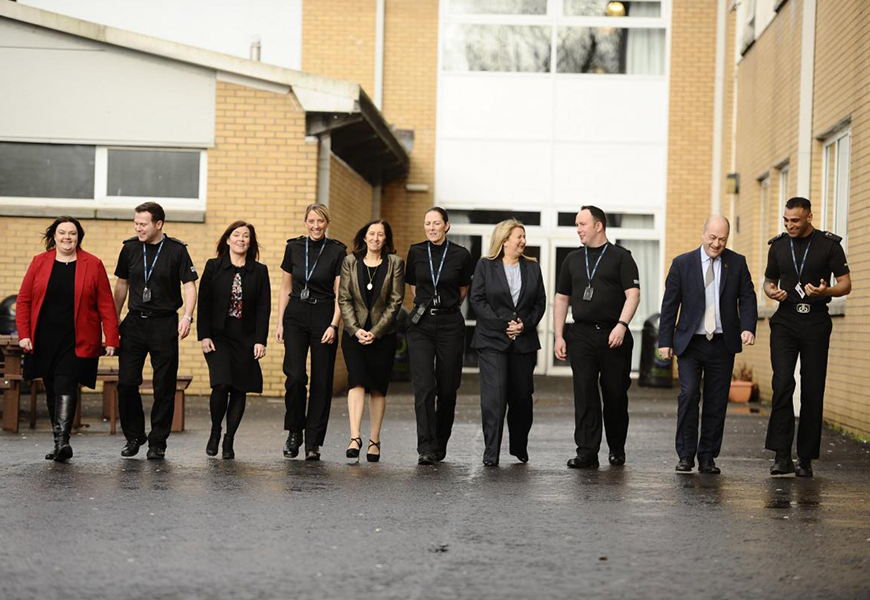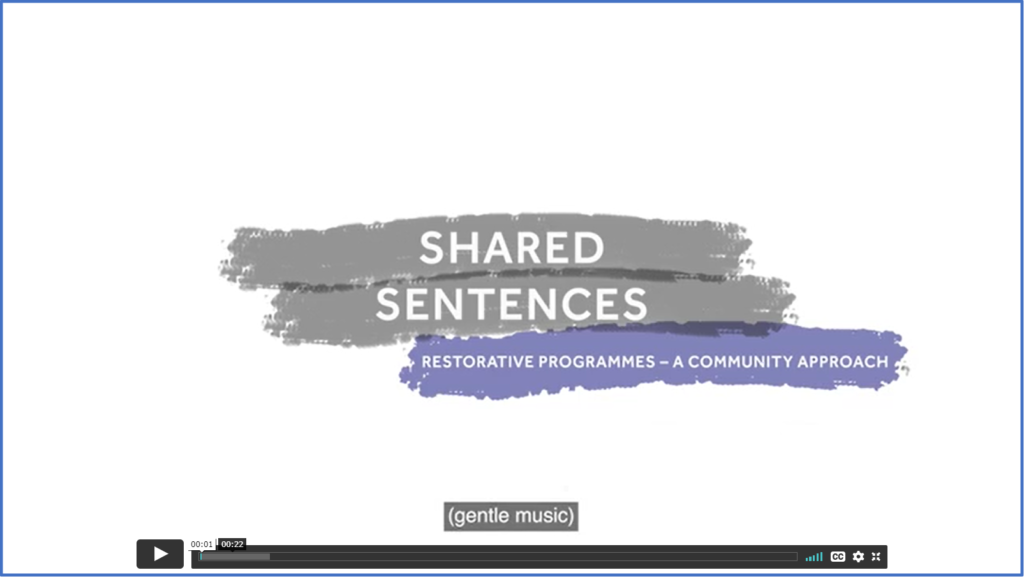Service Manager, Community Justice, Neighbourhoods, Regeneration & Sustainability (NRS)
During the early months of the year a group of young people were becoming increasingly known to the local Police and Campus Police Officers in the Toryglen area of Glasgow. The group were known for carrying knifes, annoyance to local businesses and services and general anti-social behaviour.
Glasgow City Council’s Youth Offender Team contacted the Campus Police Officers from local schools to inquire about their input into the delivery of a Restorative programme which would look at challenging the young people’s views of the Police, authority, offending and the people harmed by their behaviour. The programme aimed to highlight to young people how their behaviour affected others and was designed specifically around the offending and needs of the particular group involved.
Campus Officers have been working in Glasgow schools for many years with almost all secondary schools in Glasgow now having a dedicated Officer. They are one way in which the education and Police services are working together to help young people engage in positive behaviour and steer away from antisocial activity and crime. You can read more about Campus Officers in article by Columnist / Reporter Catriona Stewart (05/06/2019) reporting in the Evening Times by CLICKING THE PICTURE LINK BELOW:
The Campus Police Officers, along with the Community Police teams, compiled a list of suitable young people who had been prolific in the anti-social and often criminal behaviour in the local area. Joint meetings were arranged with Education, Social Work, and Glasgow City Council’s Intervention Worker to discuss everyone’s suitability. The Intervention Worker contacted the suitable individuals and their parents to gauge interest in attending. Permission slips were emailed to all parents which were signed and returned.
The Community Police Officer sourced local venues suitable for the delivery of the programme along with local businesses willing to contribute to the breakfast and lunch for the duration of the programme. The Intervention Worker began engaging with the suitable participants, getting to know them in order to design a bespoke programme to their needs.
Businesses were really keen to contribute due to many public meetings having taken place to discuss the group and the impact of their offending on the community. The community were more than happy to support this programme taking place.
The group that was identified to take part were not attending school or education establishments on a regular basis, they were chronic non-attenders who struggled to sit in a classroom. Many of the group had been or were awaiting diagnosis of ADHD which added to the belief from those establishments that they would not attend the programme – this indeed was not the case. There were 8 young people identifies of which 2 were deemed unsuitable and 6 attended and completed 7 sessions.
The programme allowed the young people the chance to be open and honest about their lives and due to the informal nature of delivery they felt comfortable to do this. The programme being delivered right in the heart of the local community – in a local community centre – meant it was really easy for them to access, and they felt comfortable in the surroundings.
There were challenges to delivery for the programme due to the drug dependency of some and the trauma that some had encountered in their lives. Some topics were really hard for the participants to take part in, but they were highly supported by the staff involved. Guest speakers such as a Paramedic and an individual who had lived experience of knife crime and prison were involved in delivering sessions that were powerful and well received.
The program’s focus on the harm caused by behaviour resulted in a restorative conference with the Community Hall’s manager, where the young people had the opportunity to listen to how their behaviour had affected those around them and the harm that it had caused. This restorative approach is a key tool in our arsenal for challenging behaviour not only in the short-term but longer term. You can watch the video by CLICKING THE PICTURE LINK BELOW and her our Intervention Worker Lorraine talk about this approach and its impact.
The young people all offered an apology for their behaviour and a reassurance that it wouldn’t happen again. The benefit of having local Police teams involved was that they had been the arresting officers for their offending behaviours and could offer alternative points of view including those of the victims of their crime allowing the young people times of reflection on their actions.
Feedback from Police and the participants at the end of the programme was that it was a success, the Police felt that they had a better relationship with the participants and that they definitely hadn’t come to their attention as often during or after the programme. One Police Officer stated:
“…..the group were previously talked about in the office on a daily basis due to their behaviour, but since the programme their names hadn’t come up at all”
Tom Jackson, Head of Community Justice commented:
“More and more in recent years there has been a resurgence in interest in restorative practices and approaches as a tool in achieving better outcomes for people and the communities in which people who are engaging in anti-social behaviour and crime cause harm. We have touched on this in previous Annual Reporters with articles around the evidence base and its practical application in different programmes across the community justice spectrum – you can access a selection of these by CLICKING THE PICTURE LINKS BELOW.
It struck me whilst reading this article that it touched on several of the drivers of offending behaviour that form the focus of the Community Justice Glasgow Partnership’s priority themes (see below Figure 1), such as poor mental health (ADHD), drug misuse, childhood trauma. It is heartening to see approaches like this that address both the community’s need to have the harm caused by the group’s behaviour addressed as well as the needs of the individuals causing the harm – I know from the experience of several years working in the Community Justice field and from the strong evidence base that supports this, that these types of approaches are invaluable in our efforts to reduce re-offending across our City.









